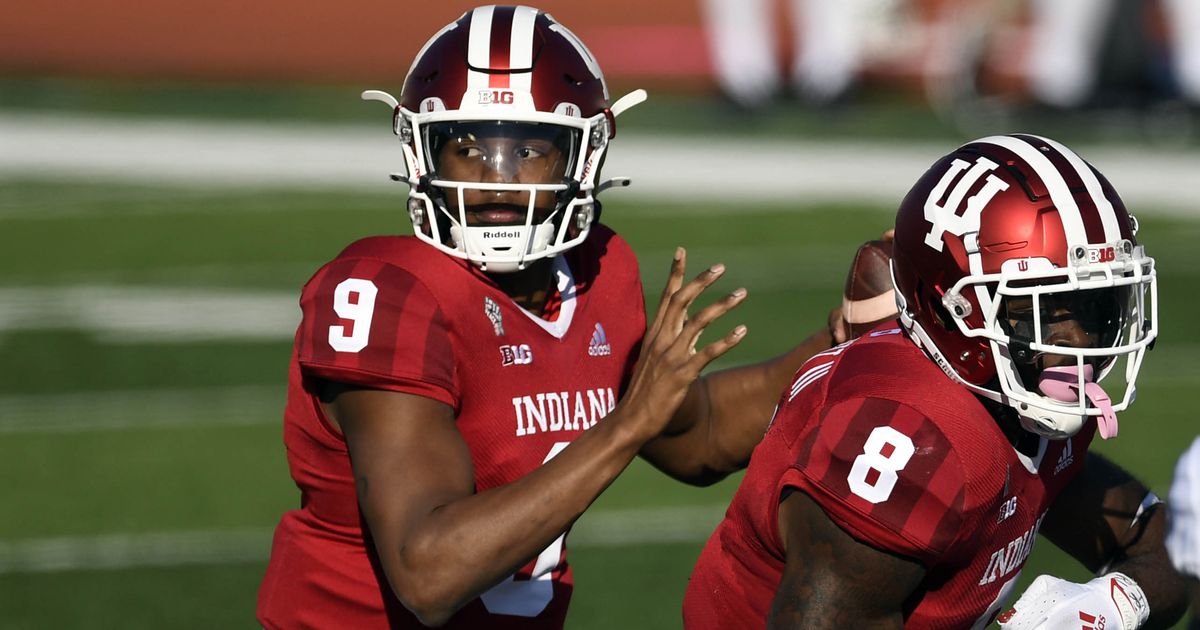Lack of fans could be playing a role in Big Ten teams’ struggles at home


ANN ARBOR, Mich. — Michigan’s football players charged out of the Big House tunnel and leaped to touch a banner at midfield, following a tradition that has made 100,000-plus fans roar for decades.
With a Michigan Stadium record-low crowd of 615 people at the Michigan State game last week, the Wolverines looked flat and lost to follow an early trend in the conference.
All five Big Ten teams that hosted games last Saturday lost. That bleak day dropped the overall record for home games in the conference to 6-7 during the COVID-19 pandemic that has sharply limited attendance at the stadiums.
“I definitely think things are a lot more balanced without any crowd or any fans,” Michigan linebacker Josh Ross said.
Of course, the Big Ten is just two games into its pandemic-shortened, eight-game season. Home teams may end up with a winning record as they have in each of the previous five seasons since the conference expanded to 14 schools.
There is no doubt, however, that the sights and sounds are much different with the crowd limited to a small number of family members and friends. Each Michigan players was allowed to have four tickets for family and friends last week while Michigan State’s football program was given 300 tickets to distribute.
The lack of fan-filled stadiums may limit the edge home teams have enjoyed — and perhaps give visitors an emotional boost.
“These players have been stuck in the same town for months so maybe there’s a field-trip effect at play as they go on road trips with their teammates and coaches,” said Dan Saferstein, a sports psychologist based in Ann Arbor, Michigan. “Maybe the home teams, meanwhile, feel a void because they’re playing in stadiums that are basically empty and that takes away from the advantage their accustomed to.”
The 23rd- ranked Wolverines (1-1) certainly hope to continue the trend because they’re on the road at No. 13 Indiana (2-0) on Saturday.
Iowa coach Kirk Ferentz, in his 22nd year, has just about seen it all in college football. Entering this season, though, Ferentz knew nothing could prepare him or his team psychologically for the awkward feeling of playing at home in a way unlike anything they had experienced.
The Hawkeyes have lost both of their games, one home and one away, by a total of five points to Northwestern and Purdue.
“I made the comment I was a little more concerned about being at home than on the road,” Ferentz recalled. “To that point, after being in both, I concur with that. I think it’s accurate. But all that being said, that’s not what the game gets decided by. It can be crutch if you want it to be.”
Iowa center Tyler Linderbaum said he and his teammates know they have to generate their own energy on the sideline these days. The Hawkeyes simply can’t lean on the band and the crowd.
“You’re used to the electric Kinnick (Stadium), fans everywhere, and you just don’t get that,” Linderbaum said.
While the Wolverines did not appear to match Michigan State’s energy, they did seem to be fired up in their season-opening win on the road against Minnesota. The players might have had a little extra pep because there were doubts games would be played at all this fall.
The Golden Gophers went on the road in their next game, coming up one point short in an overtime loss at Rutgers in a fan-free game.
“Yeah, I mean, it’s definitely different,” Minnesota quarterback Tanner Morgan said. “But that’s the 2020 season, right?”






